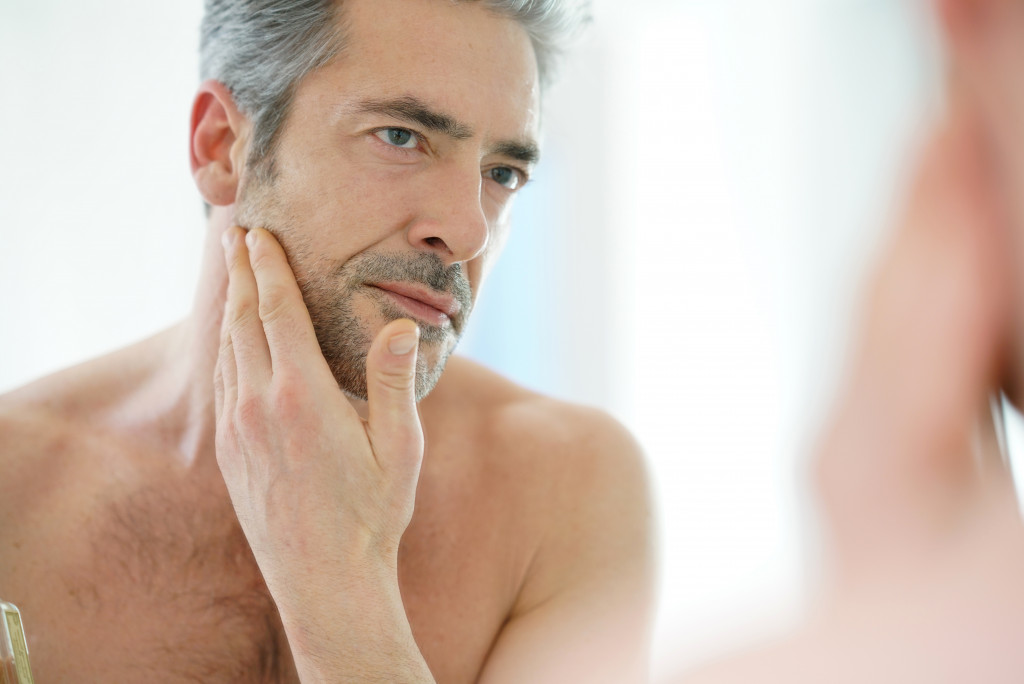Having clear, smooth, and textureless skin is a skin goal for many. So much so that people go as far as getting facials as often as they can, investing in expensive skincare products, and seeing their dermatologist regularly. Thanks to science, skincare specialists, and cosmetology schools, our skin goals are now attainable. Although that might be the case, some skin issues are more cumbersome to deal with on your own. One of which is the tiny bumps, especially around your eyes. These are called milia. They aren’t painful or noticeable from afar, but they aren’t flattering either.
What Are the Tiny Bumps Found Around the Eyes?
Have you ever wondered what the tiny bumps are around your eyes? They’re called milia. Milia are actually small cysts mostly found around the eyes. However, these can also be found on the cheeks, the forehead, and the genitals. Milia are also called milk spots, as these bumps are usually the same skin color.
As skin cells die, they sometimes shed and get trapped in pores. Keratin is also trapped in the pores, resulting in tiny cysts, also known as a milium. Although they’re usually common and don’t cause harm, nobody really knows why some people are more prone to forming them than others.
How Common Are Milia?
The development of milia is common. In fact, about 40% to 50% of newborn babies develop milia. But they often go away as the babies grow. Even then, milia can develop later in life. In one study, it was observed that milia were more common in older women.
There are two types of milia: primary and secondary. The former develops in healthy skin, while the latter develops due to another skin condition. Some skin conditions associated with the milia-like appearance include comedones, syringomas, xanthelasma, and seborrheic keratosis.

Remedies Worth Doing at Home
Some people don’t mind the appearance of milia on their skin. However, some people do. Here are some at-home remedies and practices to help address this skin condition.
Exfoliate Regularly
As Everyone knows, exfoliation helps get rid of dead skin cells. By exfoliating regularly, not only are dead skin cells removed, but it also helps prevent keratin from getting trapped in the pores. Although this sounds more like a preventative measure, it’s something worth doing to prevent any more milium from developing, along with other skin issues.
Don’t Pick
This is another bare minimum that’s often overlooked and done without a second thought when a pimple is getting too red not to notice. It’s bad enough that it involves touching, but picking or squeezing can further cause stress and irritation on the skin. Picking on the milia present on the most sensitive area of the face such as the eye area will only lead to redness and irritation.
Vitamin A
Creams, gels, topical retinoids, and other skin products that contain vitamin A may help. Vitamin A, especially topical retinoids, is commonly used to manage acne and other skin conditions. Although there is scarce evidence of its effectiveness on milia, it may help.
Medical Treatments to Consider
The thing about treating milia is that it may take time. Depending on the severity and coverage of the area, a person might want to get results as soon as possible. It may cause discomfort or loss of confidence to some. Fortunately, there are options you can consider. For a more certain, instant, and long-term solution, seek a professional and ask about treatments.
Microdermabrasion
Microdermabrasion is a procedure that involves removing the top layers of skin, ultimately renewing the skin’s tone and texture. It renews by getting rid of age spots, sun damage, acne scarring, milia, and other skin conditions.
De-roofing
One of the most common procedures used to get rid of milia is called deroofing. Deroofing is a technique wherein the ‘roof’ of a cyst, abscess, etc., is removed. A small area of the skin is excavated with a tool, pricking out the trapped keratin inside a pore. The procedure is not as painful as it may sound. At most, you’ll just feel a prick.
Simple Excision
This is often used for milia on the more severe end of the spectrum. For example, Milia en plaque, an uncommon variant, simple excision may help. Although this variant of milia recurrence can happen, it’s primarily benign and more of a cosmetic problem in nature. One of its recommended procedures is simple excision.
The Bottom Line
Milia are often harmless and can disappear on their own. However, when there’s a noticeable number of them, they can make anyone feel conscious about their skin. Makeup might not even be enough to camouflage them since milia give skin texture. However, with these tips for skincare and treatments, milia can be prevented and removed.

